I like knowing how things work. This is partly why I took up film photography in the first place, because I wanted to understand how pictures could be made. However, I’m not in a position to have a darkroom setup, and at the moment I’m more interested in the results of using film photography as a medium. That means I love seeing my scans come through to my email, trying out different film stocks, and being present with my camera in that moment. For me, the development process is something I’m happy to leave to professionals for now.
So when there are many variables for B&W developing, how can I feel involved in that process? Well I could go down the home developing route, but as I’ve already said that’s not an option right now. I could pay more and have it developed at a professional lab, where I could choose the developer and customise that experience. Most of the time I’ve been sending my rolls of traditional B&W emulsions to independent or commercial labs, and for the most part I’ve been happy with the results. However, because I like to know how things work, I feel a bit ‘left in the dark’ about how to improve my B&W photography when the I’m not part of the development process.
This has meant that for a long time the B&W film stock I’ve compared others to has been Ilford HP5 – readily available, and giving me a consistent base to learn from. It has been forgiving of my rookie errors, and I’ve enjoyed seeing the photos after trying it out in different conditions and at various exposure indexes. However, recently I’ve been falling out of love with HP5+, and I have been branching out to try other film stocks for my B&W photos. Yes, I like knowing how things work, but I like finding consistency and reliability too – so it’s been worth trying some different films out, no matter where I stumble across them.
Why try Ilford XP2?
This is where the story shifts, as I find myself shopping in Boots, Trafford Centre for shower gel (bear with me!) and looking around the aisles for other deals. At the back there’s a photo section, and in amongst the disposables, and photo albums, was some Ilford XP2. Advertised as a highly versatile black & white film that can be processed on the high street (in C41 chemicals) I thought it was worth a go. After getting home, I did some research on it and found that it can be shot from ISO 50 to ISO 800 without any change in development! More information can be found on the technical sheet here.
Now I had to try this out for myself, so the first roll I shot at my mate’s New Year’s Eve party, setting it at EI1600 (indoors, no flash) and having it developed accordingly, and it worked a treat! I won’t share those photos here because of privacy, but I can tell you I was very pleasantly surprised by the results. This encouraged me to pick up some more XP2 for a couple of walks I had planned, one around Manchester, and another up in the Yorkshire Dales.
For the examples below Ilford XP2 is on the left, taken with my Nikon FM2 and 50mm f/1.8 pancake lens. On the right is Ilford HP5+ taken with my Olympus XA and its 35mm f/2.8 Zuiko lens. I tried both films at box speed, and then rated at EI800 and pushed one stop in development. I’ve also included 3 x landscape format pictures that are just on Ilford XP2 with the Nikon FM2, that I think typify my experience with this film. Now this article is not science but subjectivity, with me sharing what I think about each image, and what values I see in them. As someone who does not engage with darkroom culture, I want to share my results so that others can see another example of what they might expect back from their local lab. I do not claim to present this information as the definitive ‘version’ of the film stock, but just as a reference point along my own film photography journey.
Ilford XP2 and Ilford HP5+ at box speed (EI400)
In between the usual drizzle and attempts at snow, we have had some crisp, clear winter days here in Manchester, so I took myself out on a walk around the city. With the low winter sun creating lots of interesting shadow, it was a nice time to try out Ilford XP2 again, and compare it to my usual favourite Ilford HP5+ and see what I prefer!
Example 1
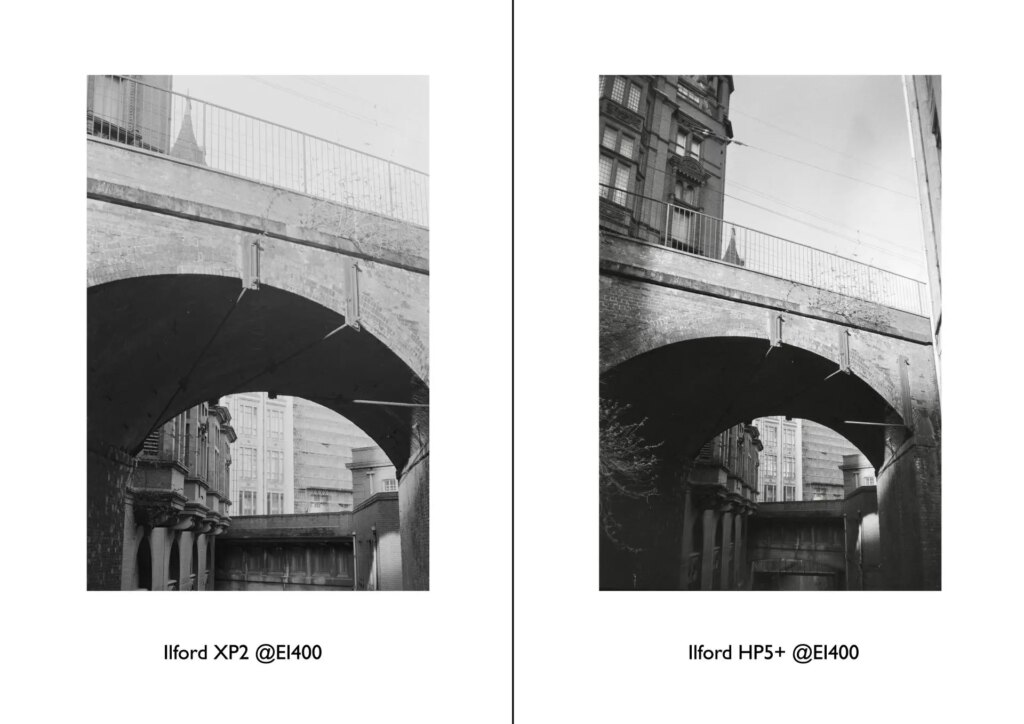
Example 2
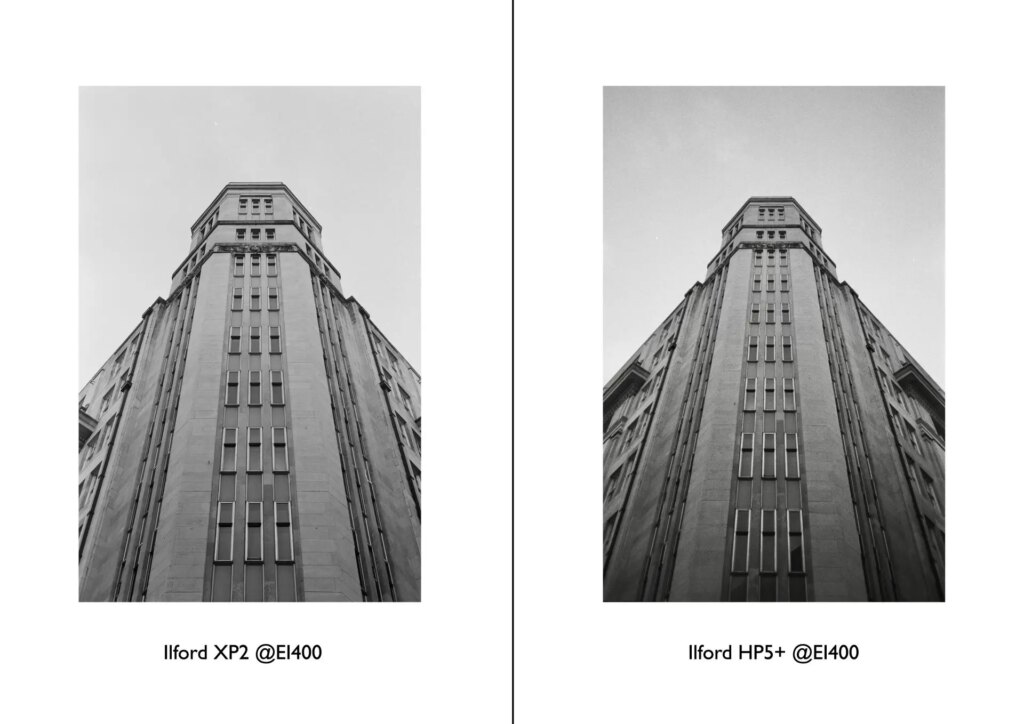
Example 3
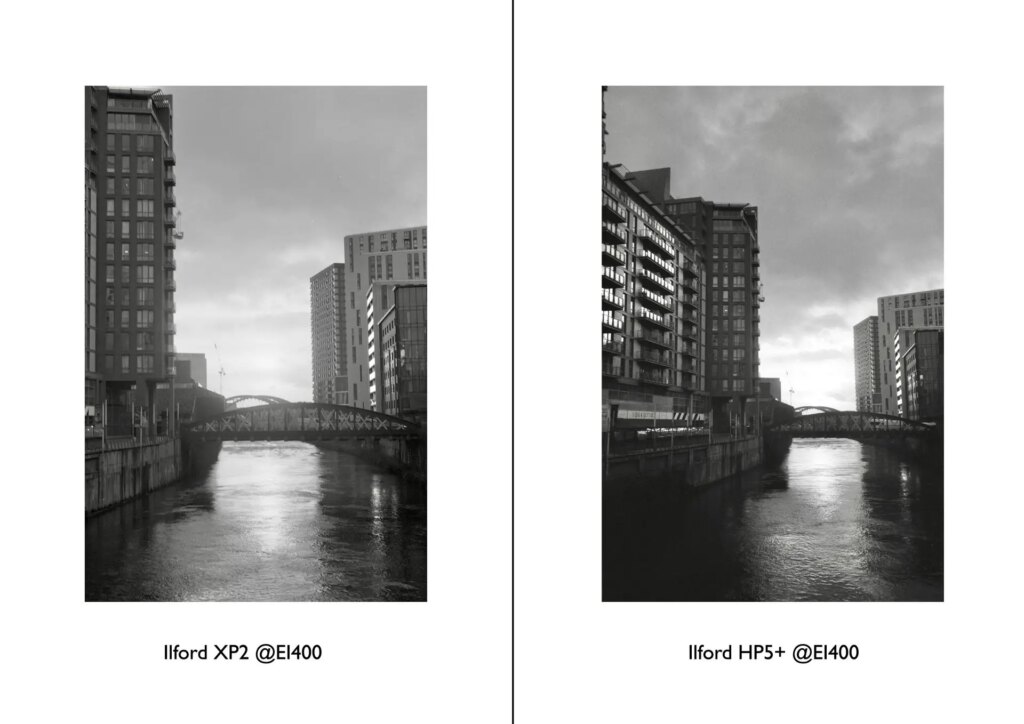
Example 4
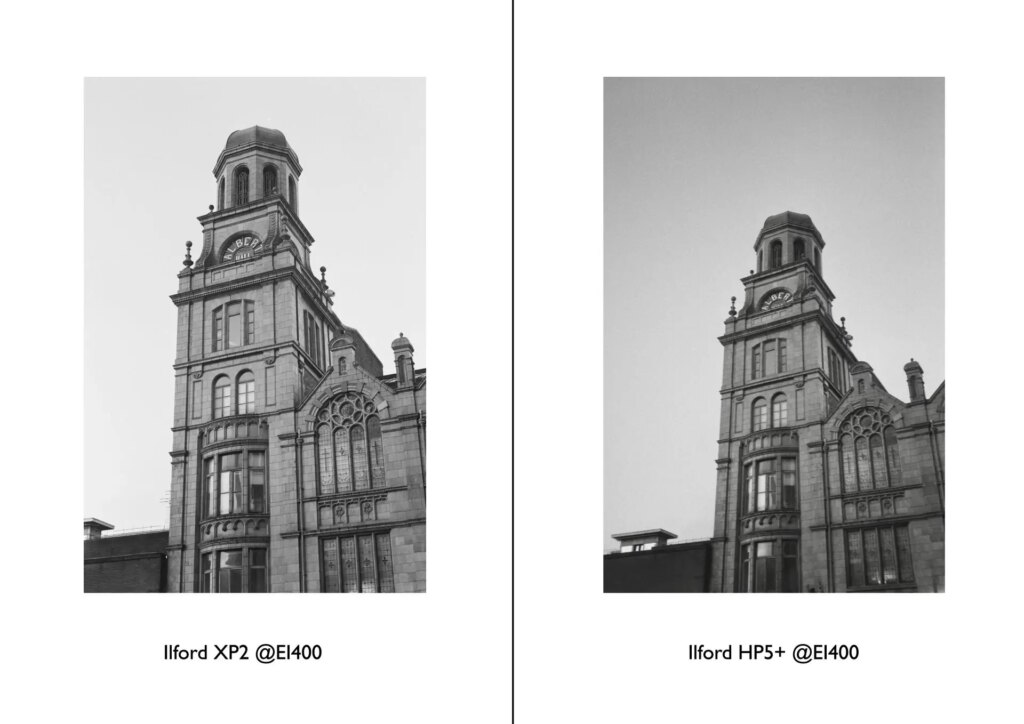
Example 5
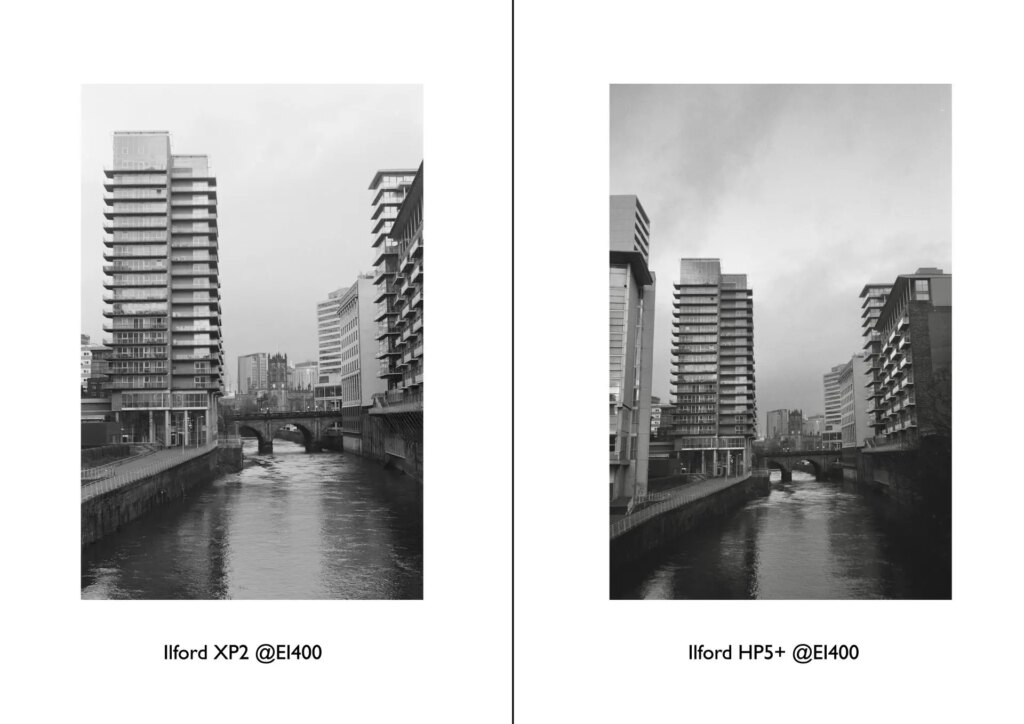
Ilford XP2 and Ilford HP5+ pushed +1 stop (EI800)
After finishing my rolls at box speed, I was in two minds about whether to try XP2 at EI800 or EI200 for finer grain. However, the weather reminded me that it was still Winter, and I layered up and had a brief walk through town with both films set to EI800, with the HP5+ to be pushed +1 stop – the XP2 is doing it’s party trick here and is developed normally. The following week I was visiting my family near the Yorkshire Dales, and still had those films loaded, so the final few images are from my drive back.
Example 1
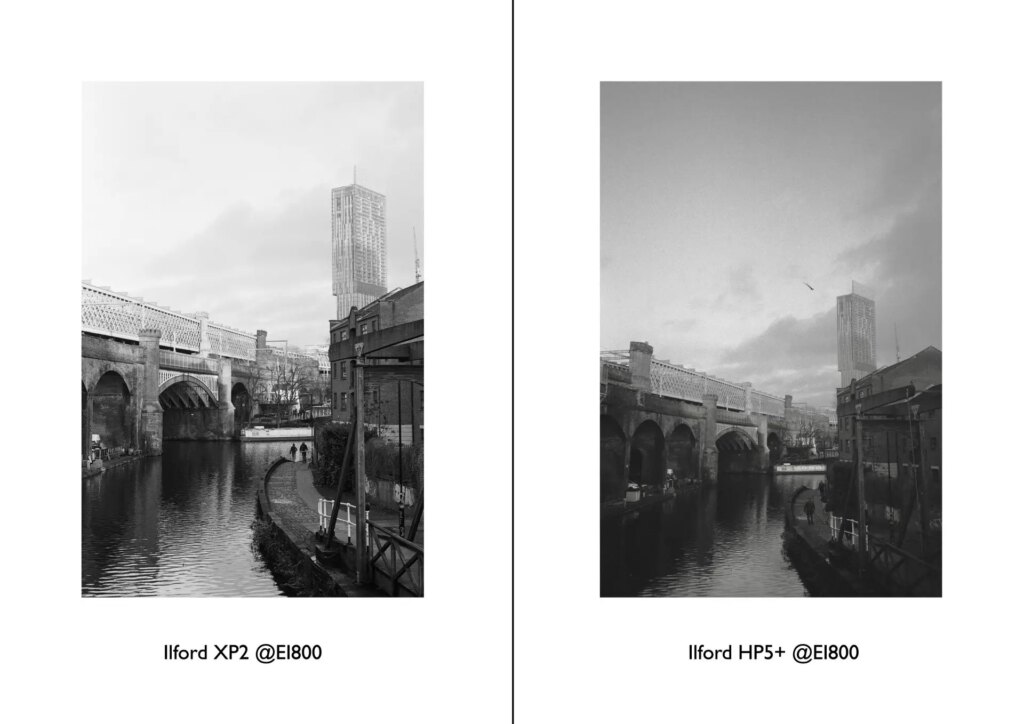
Example 2
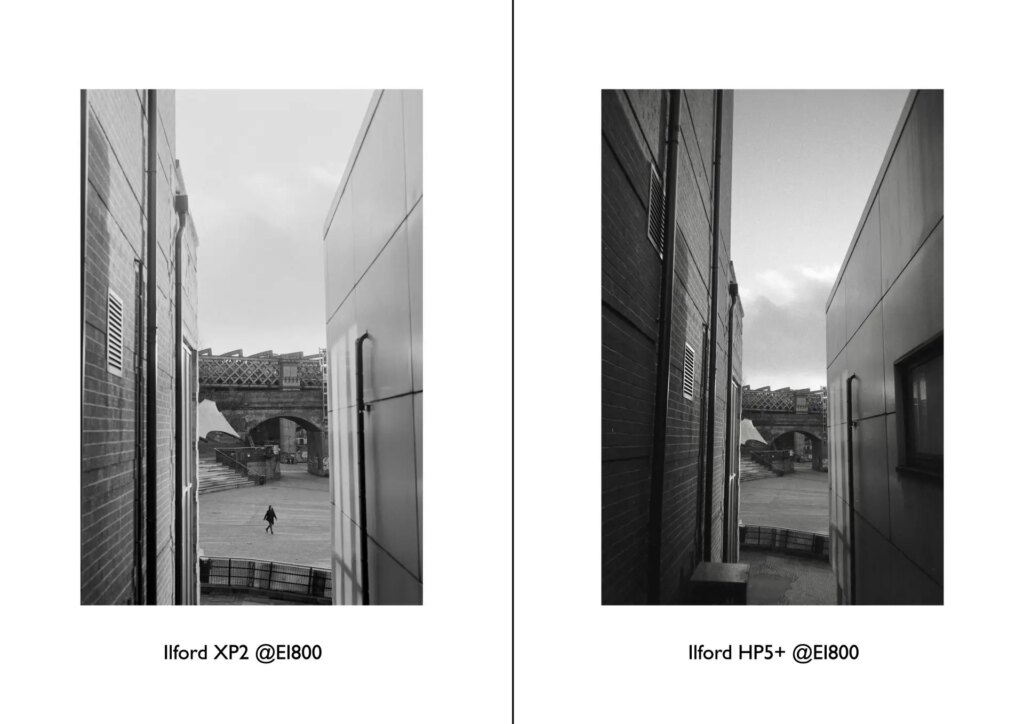
Example 3
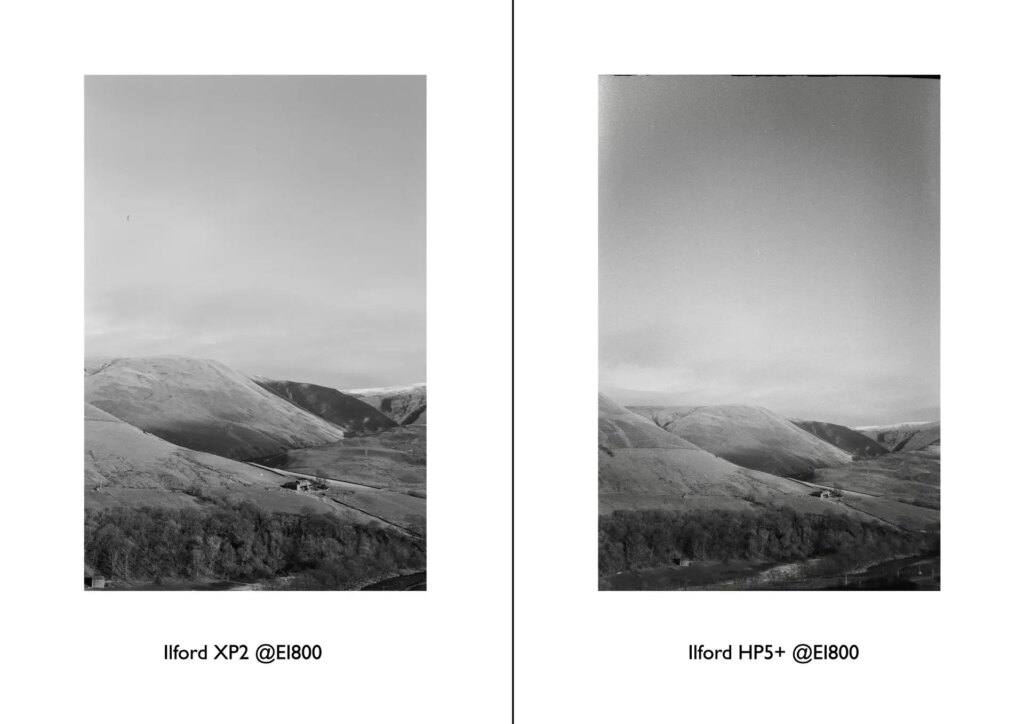
Example 4
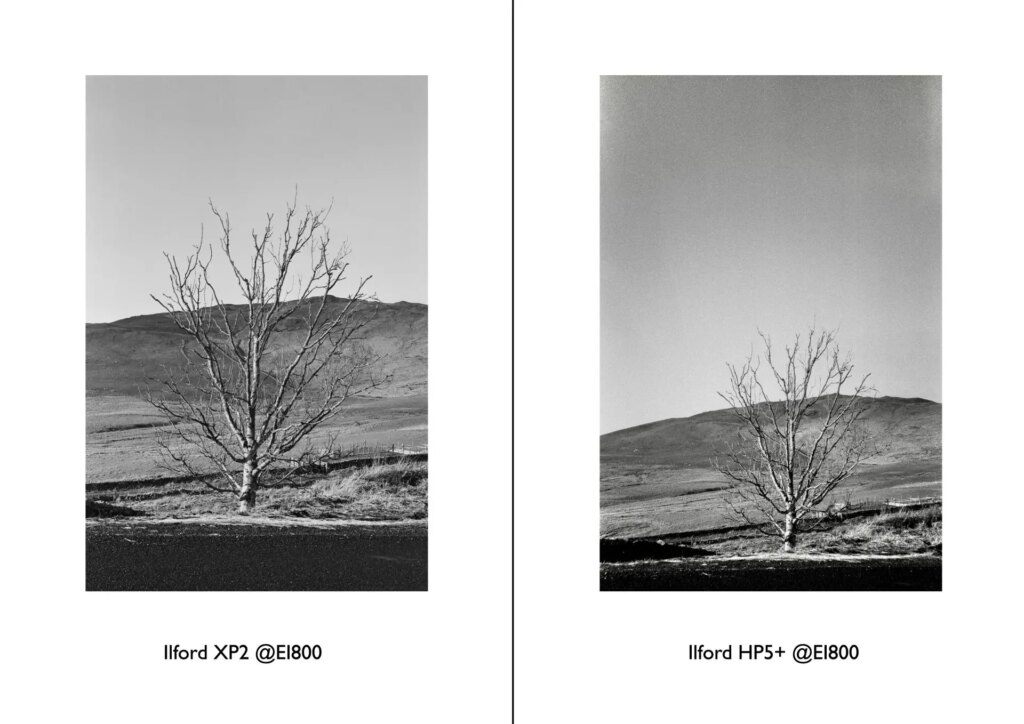
Example 5
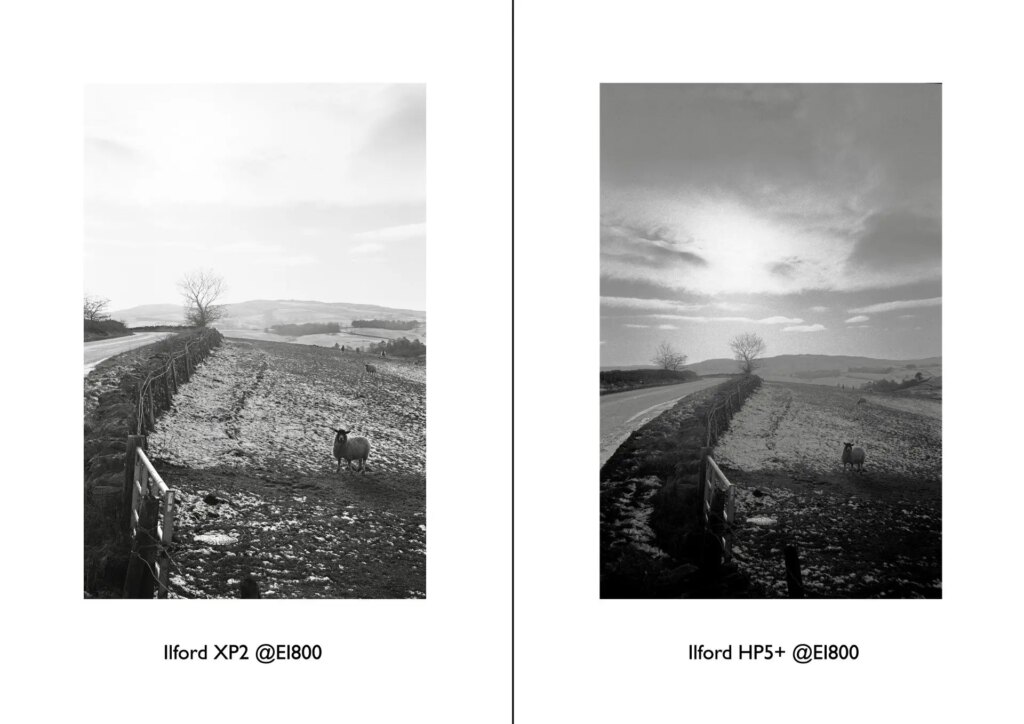
Three Landscape format examples of Ilford XP2
Example 1
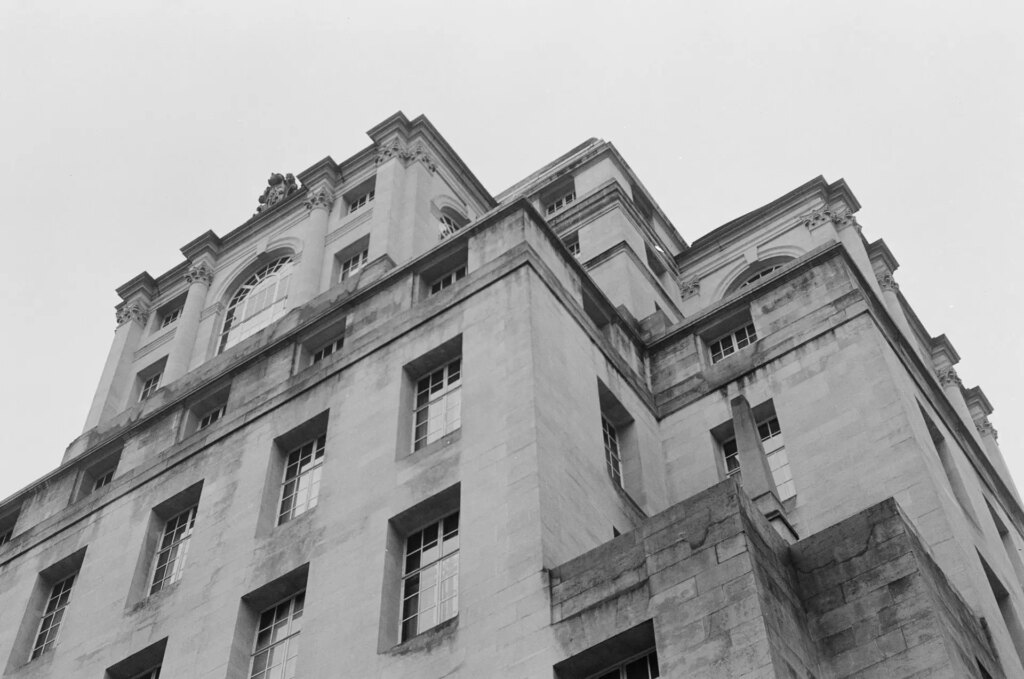
Example 2
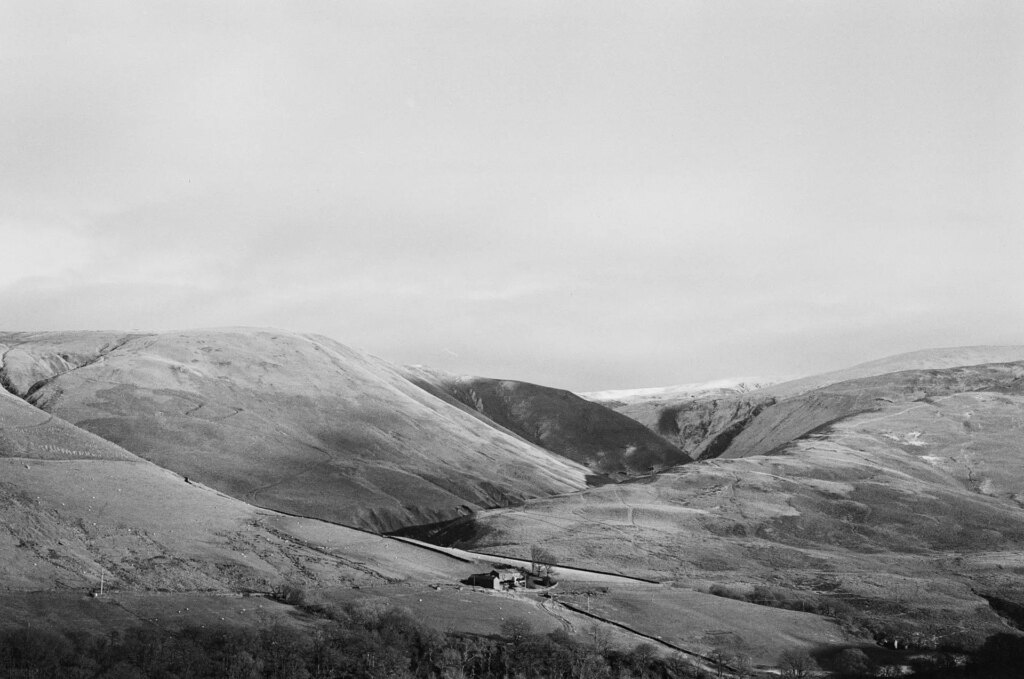
Example 3
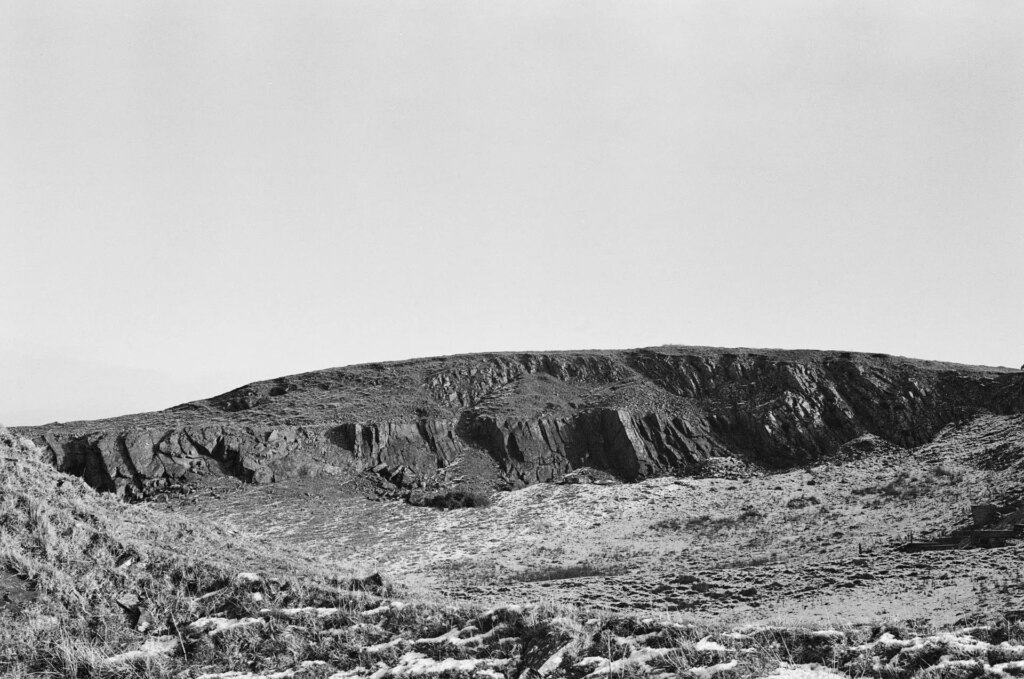
Final Thoughts on Ilford XP2
Well I hope you found the comparison interesting, this would 100% be something I would do anyway regardless of sharing it here on the blog, as I try to find film stocks that I like and suit my own taste/style. At the start of the article I talked about knowing how things work, and I think that with XP2 I’ve found a film stock I find reliable within the C41 process I know from colour film. If you’re coming from shooting mainly colour film, then Ilford XP2 is such a good B&W film to start with because they share the same processing standard, which means it is cheaper to develop, and it shares similar characteristics due to it’s chromogenic design. I am intrigued by trying it set at a lower exposure index in the summer, such as EI200 or 100, and see how the results change. I’ve been interested in trying to get a light, airy, summer look on B&W film and think that XP2 may shine (pun intended!) at doing that.
Honestly, I think that I will be using Ilford XP2 for a long time, because of its convenience, fine grain and latitude. I’ve not had to do any edits after receiving scans back, and it has the sharpness, fidelity, and flexibility I’m looking for in a B&W film stock. In regards to knowing how things work, just for now, I’m happy to leave the magic of the darkroom for another day.
What is your opinion on using Ilford XP2 over traditionally processed B&W films? How do you go about improving your own B&W photography? Let me know in the comments below.
For more articles on 35mmc using Ilford XP2 click here.
If you’re interested in Ilford XP2 being developed in traditional black and white chemistry click here.
If you want more technical information on Ilford XP2, please view the data sheet here.
EI400 scans were developed and processed by Jacks Lab in Bristol. Find them on instagram here: @jackslab.co
EI800 scans were developed and processed by Come Through Lab in Ancoats, Manchester. Find them on instagram here: @comethroughlab .
Thanks for reading, and I look forward to sharing more of my photos and experiences with this community soon.
You can find me on Instagram: @tedayre
Share this post:
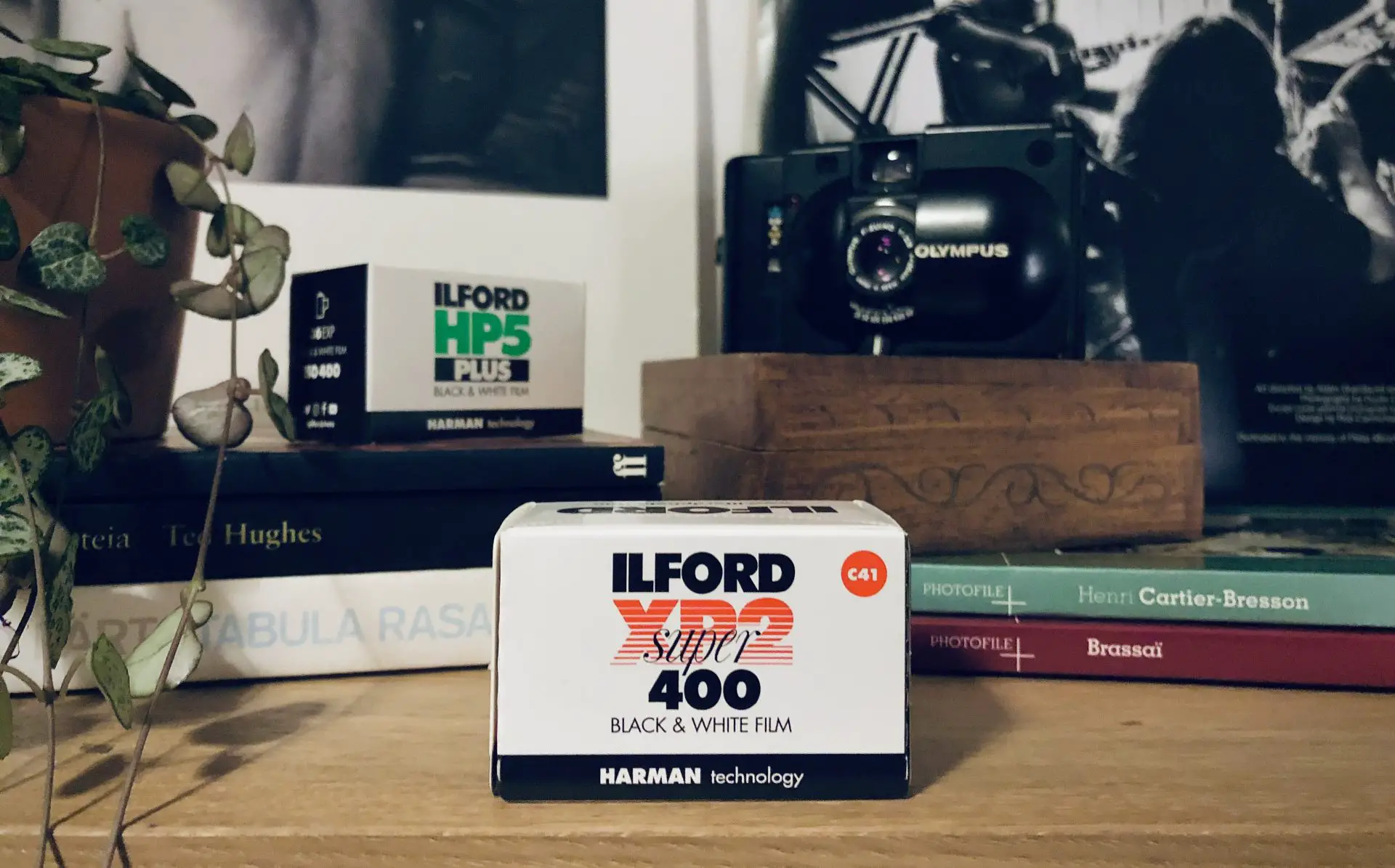








Comments
Arne Heeringa on Ilford XP2 – High Street Superhero – Film Review – By Ted Ayre
Comment posted: 19/03/2023
You can develop your film at home without darkroom, just use a changing bag. I do so. Developing and darkroom printing are such fun! For printing you could revert to a community darkroom or find another one (I do so here in Wuppertal at the open university called VHS in Germany).
Ilford XP2 works very well with Caffenol they say. I didn't yet try XP2 in Caffenol but many others. Here are some recipes (soluble strong coffee and anhydrous soda - otherwise multiply soda by 2,7 when pentahydrate):
http://caffenol.blogspot.com/2011/08/its-so-easy.html?m=1
http://caffenol.blogspot.com/2014/02/rezepte.html?m=1
Have fun!
Best regards,
Arne Heeringa
Comment posted: 19/03/2023
Martin JONES on Ilford XP2 – High Street Superhero – Film Review – By Ted Ayre
Comment posted: 19/03/2023
Comment posted: 19/03/2023
John Fontana on Ilford XP2 – High Street Superhero – Film Review – By Ted Ayre
Comment posted: 19/03/2023
John Fontana on Ilford XP2 – High Street Superhero – Film Review – By Ted Ayre
Comment posted: 19/03/2023
Jerry Scoby on Ilford XP2 – High Street Superhero – Film Review – By Ted Ayre
Comment posted: 19/03/2023
Mark Lewis on Ilford XP2 – High Street Superhero – Film Review – By Ted Ayre
Comment posted: 19/03/2023
Using XP2 gave me a huge advantage, as if I had time, I could process and print my film in the darkroom for publication, or if I needed it in a hurry, I could pop into any 45 minute processing lab, and get it done while I grabbed a quick bite to eat.
I still have a bunch of current XP2 in the fridge at home, for use in the same film cameras I had available in the '80s/'90s. I can process it at home, or drop it off at the local lab.
John Poirier on Ilford XP2 – High Street Superhero – Film Review – By Ted Ayre
Comment posted: 19/03/2023
Scanning parameters also affect tonal rendition. Without knowing the parameters of the processing of the HP5, and the scanning parameters for both types of film, it is tricky to make a direct comparison.
One useful characteristic of XP2 is that, unlike nearly all conventional black and white films, it can be scanned using "Digital ICE" technology, resulting in greatly reduced dust issues relative to conventional films.
Vlad Serebryany on Ilford XP2 – High Street Superhero – Film Review – By Ted Ayre
Comment posted: 20/03/2023
Gil Aegerter on Ilford XP2 – High Street Superhero – Film Review – By Ted Ayre
Comment posted: 20/03/2023
Your results mesh with mine, that XP2 likes a contrasty situation. Yet, I wonder how much the differences between your shots with XP2 and HP5 are the result of films used as with the lenses used.
Anyway thanks for the interesting post.
Wouter Willemse on Ilford XP2 – High Street Superhero – Film Review – By Ted Ayre
Comment posted: 21/03/2023
I like Ilford XP2, it is really nice film. From your scans, though, I tend to prefer the HP5 ones - nicer highlights and a bit more contrast. The tricky bit is whether the scans were done identical or not, and whether or not the scanning software applied any correction.
If you'd start developing at home, though, I would not recommend XP2 really. Mostly because there are plenty "real" B&W films out there, at much nicer prices (where I shop, HP5 is cheaper than XP2, and Foma films again a good step more affordable). Most don't have the extreme latitude of XP2, but one gets used to having to work with a single ISO setting throughout.
Finding a good combination of film and developer, and then pulling the negatives from the development tank and see your images - it's such a nice moment. Even more sense those negatives being really yours, more sense of accomplishment, it puts a dot on the i.
Scott Edwards on Ilford XP2 – High Street Superhero – Film Review – By Ted Ayre
Comment posted: 01/09/2023
Paul Quellin on Ilford XP2 – High Street Superhero – Film Review – By Ted Ayre
Comment posted: 01/09/2023